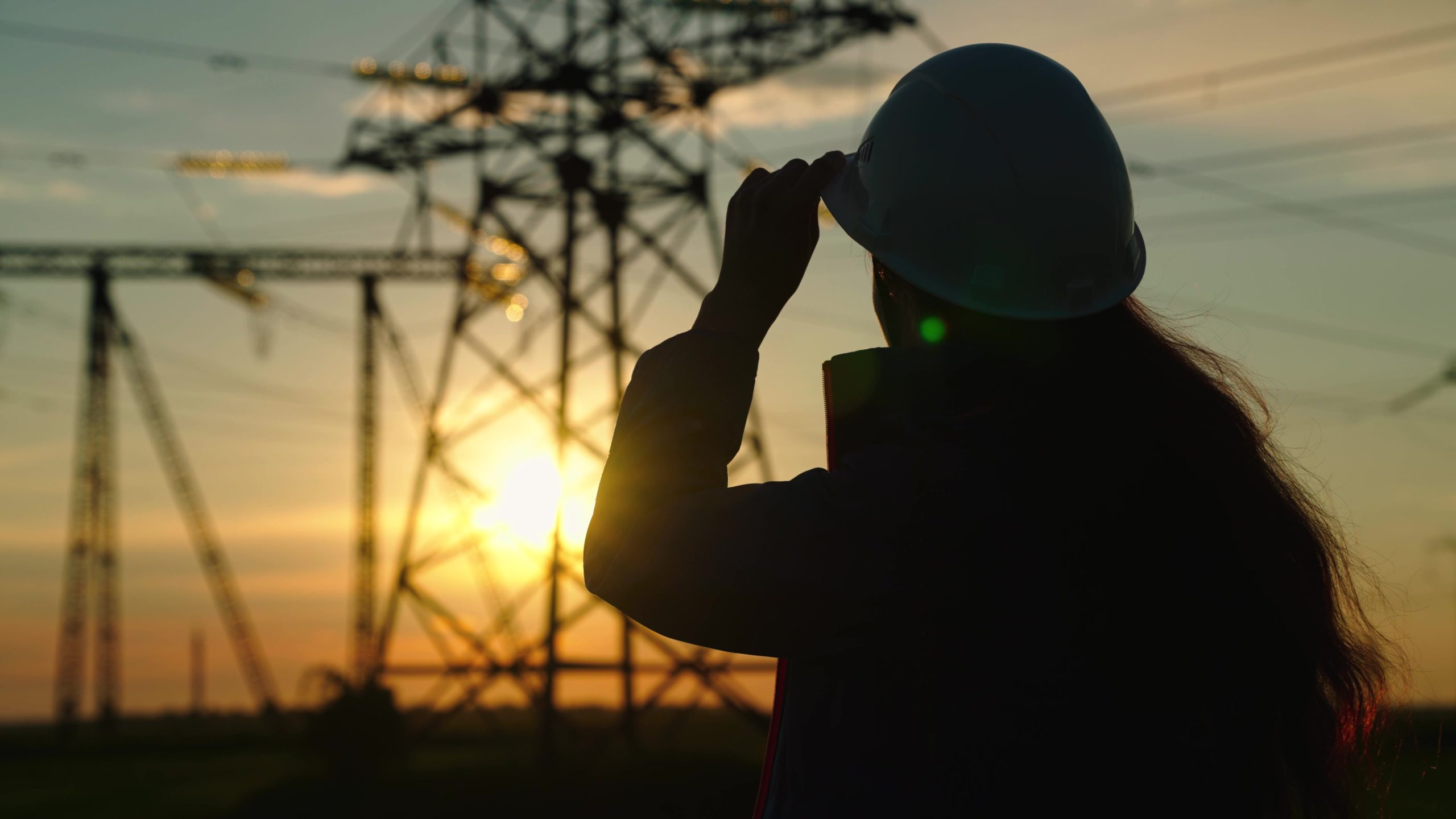
Right-sizing: It’s time to make inclusive PPE accessible
By Paula Campkin

Photo: Adobe Stock
Intentional or not, many workers are getting the message that their ill-fitting personal protective equipment (PPE) is “not a big deal” or that “there are more important things to worry about.”
Any worker who falls outside the typical measurements for PPE deals with this issue. These workers would rather focus on their work, but their poorly fitting PPE turns their day into a series of adjustments and repositioning so they can work safely.
Some of my colleagues have shared experiences where PPE was supplied, but if better quality or a better fit was needed, the worker had to pay out of pocket. The reality is many organizations leave it to workers to find solutions for properly fitting PPE instead of leading the way. With rapid advancement into the world of customization and accessibility, I’m genuinely surprised when something so basic is left unaddressed.
When an organization’s ability to supply proper fitting PPE doesn’t appear to be a priority, it can signal that worker safety is not a priority. I know of many instances when workers have raised concerns about this only to have it go nowhere or, worse yet, become seen as a “difficult” employee by their peers or their employer. Every roadblock experienced by a worker to find properly fitting PPE is another confirmation that they should make do and learn to live with it, and it creates a culture of silence.
A Canadian Standards Association (CSA) Group’s research report, “Canadian Women’s Experiences with Personal Protective Equipment in the Workplace” highlights the experiences of over 2,700 women, a group that is commonly affected by this issue. The study found that 41% of survey respondents feared termination for refusing work related to unsafe or poorly fitting PPE.
You are not alone
I was fortunate to participate in the working group for the CSA Group’s research report, where I met many who are passionate about ensuring all workers have access to properly fitting PPE. I reached out to my network, and several shared examples of experiences with the issue:
- Lee-Anne Lyon Bartley recalled, “For workers I supported, they would complain that ill-fitting gloves can get in the way and slow down what they were doing, often times getting caught up in the work as they were too big. Some employers were reluctant to get multiple sizes and workers were told in so many words to just make it work.”
- Shannon Bolger with Benchmark Safety shared concerns about vests, saying, “Petite women [and other smaller or shorter] workers may find vests oversized, either because they’re ‘one-size-fits-all’ or because they need to order a larger size to fit their other measurements. This often leaves parts of the vest feeling cumbersome and I’ve witnessed women getting caught by their striping on the edge of shelving in a warehouse.”
- Jodi Huettner owner of Helga Wear Inc. said, “My steel-toed boots never fit right – they made the balls of my feet and the top of my foot ache, and my feet seemed to slide around no matter how tight I tied them. My gloves hung off my fingertips, which impeded my fine motor skills when writing field notes or using sampling equipment. And I would go through disposable gloves like crazy since the overhanging tips of the glove were getting caught and ripped open.”
Another common example specific to women and PPE issues is what should be the simple task of going to the washroom when working in the field. Men can usually accomplish this without leaving the field, but women frequently have to stop work to use a far-off restroom. Many find ways to avoid or delay this bodily function so they can get more work done, especially if they are part of a team.
I know many women who choose not to drink water because they don’t want to slow their team down or be singled out.
To further complicate matters, when working in bear country, some safety protocols require co-workers to be within line of sight, adding stress and embarrassment for these women.
Everyone wants to be a valued member of the team, and no one sets out to be labelled as “difficult to work with.” Such labels can create unwanted attention, embarrassment and exclusions from social conversations or career opportunities. The question is, are these people being difficult or are they just challenging a blind spot in our system?
Systemic bias
When a process has an inherent tendency to support a particular outcome — such as only providing PPE based on a few sizes — it is the very definition of systemic bias.
From my experience, systemic bias is the result of a complex issue. It’s easy to say employers don’t care when, in reality, they might be struggling to find a reasonable solution or may not even be aware there is an issue. I think many struggle to find the right balance between providing accommodations and maintaining an efficient process.
Huettner added, “It’s not just a matter of keeping prices and lead time down while keeping quality high. The challenge I often face is to first convince the decision-makers that women’s PPE is actually needed.”
Clearly, there is an inconsistent understanding of the issue and a spectrum of opinions when it comes to the desire to change. Regardless, when left unaddressed, workers find ways to make it work.
Candace Sellar with CSA Group shared, “Over 50% of respondents reported modifying their PPE. The most notable and alarming workaround is simply not wearing it.”
Many of these examples focus on women because that is where my experience with the issue lies, but this affects a broad range of workers — tall and short, men and women, heavy and thin — anyone who doesn’t fall into the typical measurements that most PPE is based on.
What others are doing
There are companies leading the way in this space, hoping to make a difference and inspire others to change. One example is Enbridge’s new Diverse & Inclusive PPE program. Cindy Déchar-Fisher had the opportunity to present the idea to her executives. Many recognized the need to align the PPE offering to Enbridge’s values of Safety, Respect, Integrity, and Inclusion, and it made sense to them to find ways to address it.
The program’s initial focus is to ensure women have access to apparel that is needed on a daily basis including t-shirts, gloves, long sleeved shirts and jackets. Enbridge is working in partnership with its distributors to address the challenge of finding the right sizing charts, and the hope is to expand the program to address gaps in PPE for men as well.
For others looking to start, Cindy’s advice is to listen to workers. They know best what works for them and what doesn’t, and by asking questions, unanticipated challenges or concerns can be addressed. The inclusive PPE program is gaining momentum and Cindy credits its success to team members seeing the benefits and wanting to do more.
Be the change
While many are aware of this problem, it can be daunting to figure out how to help or even just where to start. To create change, the desire to produce a better outcome must be greater than the obstacles. The more people who are aware of and discussing these issues, the easier it will be to develop effective solutions.
Perhaps start with extending the type of program many employers already have in place. Work boots are a great example of employers recognizing differences in fit for employees. Most will reimburse employees when purchasing their own boots if they meet work requirements such as steel toes, ankle support and price range.
Consider implementing the same approach when it comes to the most frequently modified types of PPE. According to the CSA Group report, across all types of PPE, approximately half of women who wear fall-arrest gear (53%), hearing protection (49%), protective clothing (48%), and head protection (47%) modify or alter their PPE for safety, comfort, and improved fit.[1]
If you’re in a leadership position, ask your workers if their PPE has a negative impact on their ability to work safely. If you’re part of the process of sourcing PPE, does your system have a way to identify and accommodate those who fall outside of common measurements? If you’re affected or know others who are, talk about the issue and reach out to your network to find out what others are doing to address this important issue.
 Paula M.A. Campkin is the vice-president, operations and Safety Centre of Excellence at Energy Safety Canada.
Paula M.A. Campkin is the vice-president, operations and Safety Centre of Excellence at Energy Safety Canada.
[1] CSA Group. (2022, November 15). Canadian Women’s Experiences with Personal Protective Equipment in the Workplace – CSA Group. https://www.csagroup.org/article/research/canadian-womens-experiences-with-personal-protective-equipment-in-the-workplace/